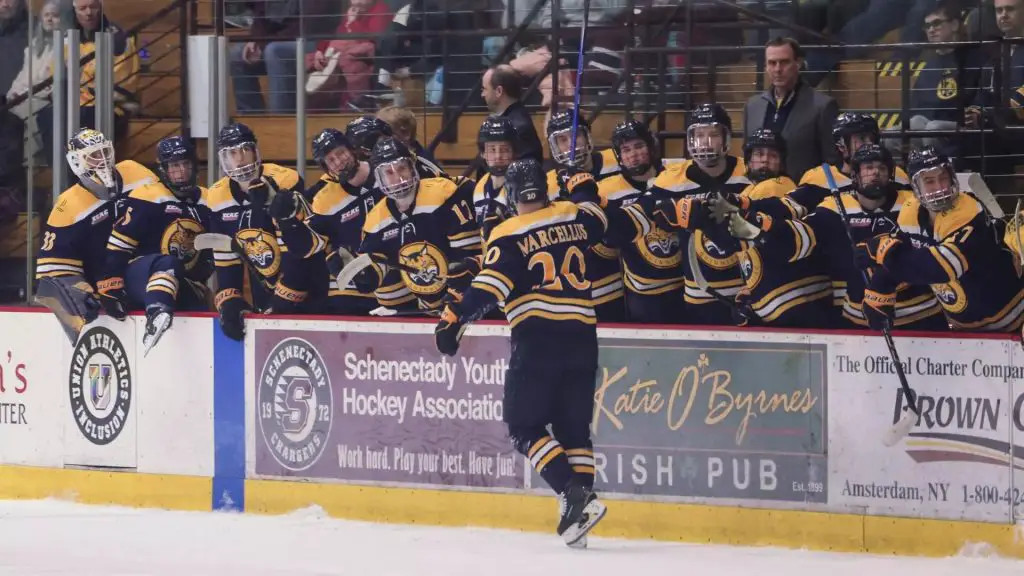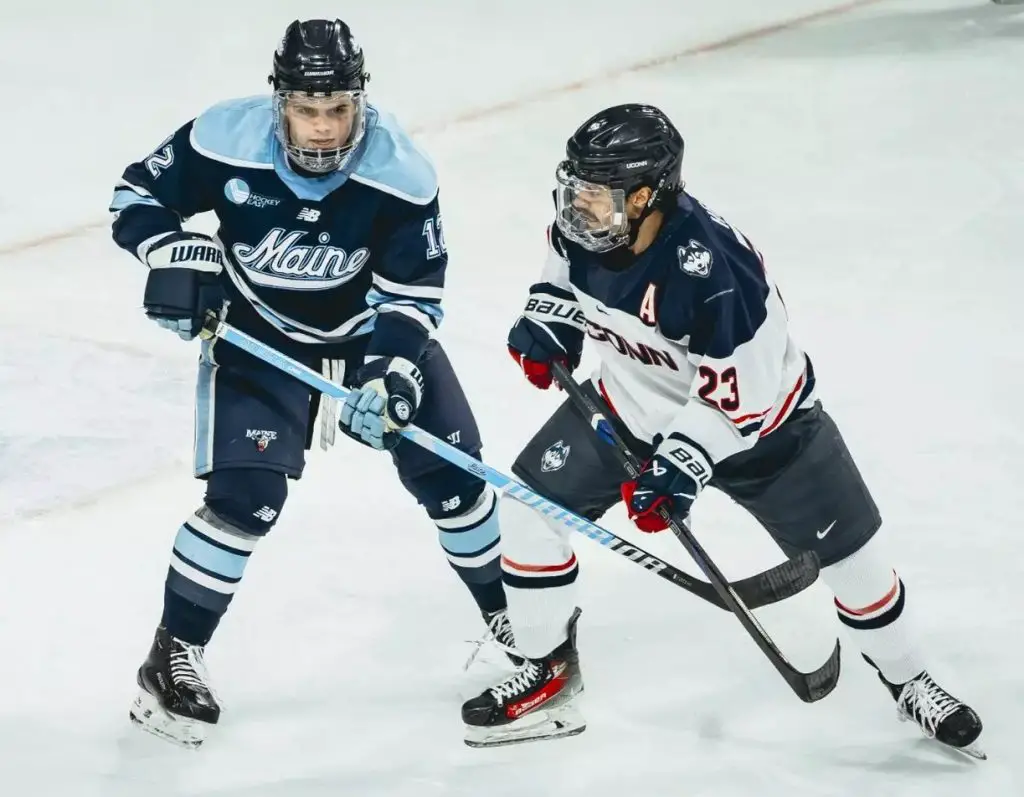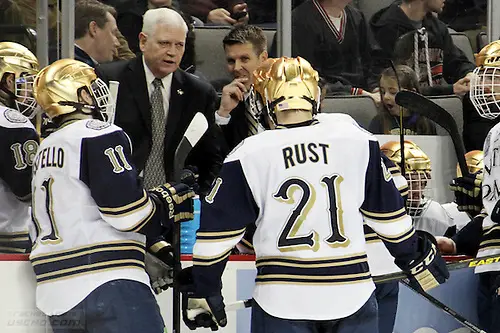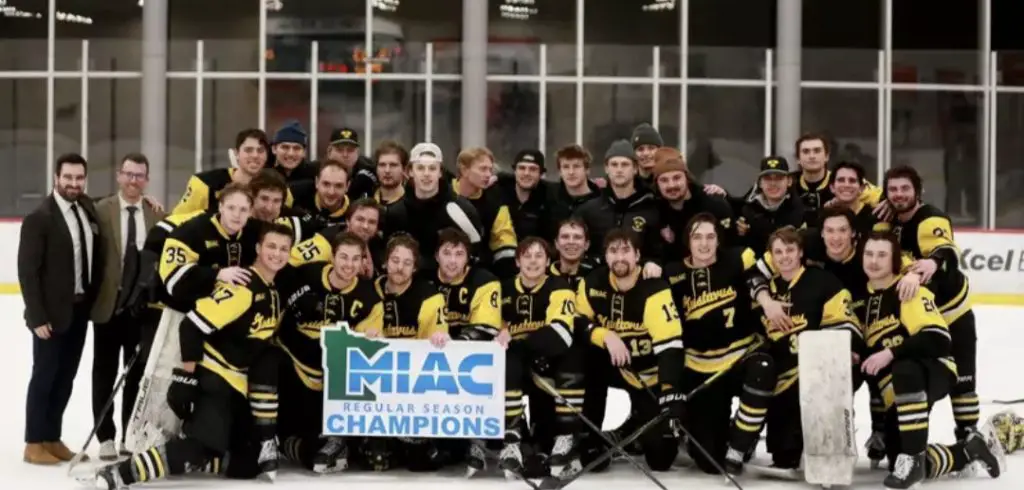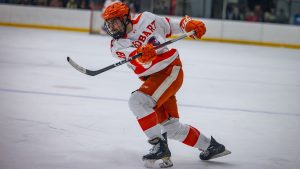
Here is Part II of this week’s two-part game predictions with a smorgasbord of quarterfinals (NEHC & NESCAC); semifinal action (CNE, MAC, MASCAC, SUNYAC & UCHC) and one title game in the NE-10. The upset bug hit big with MCLA’s win as an No. 8 seed on Thursday and now the remaining teams are all one week closer to a big prize. Every team is putting it all on the ice trying to attain something that has been dreamed about since last October. Virtually all the favorites won earlier this week so will that trend continue as stakes get higher? Look for some exceptional hockey on Saturday that will crown one conference winner while determining final four or championship pairings across the remaining seven conferences in the east.
Wednesday and Thursday’s opening round picks finished at picks finished at an amazing 9-1-0 (.900) missing out on the huge MCLA upset win. Hopefully, that is a good sign entering a big weekend of playoff games on Saturday. My season numbers after yesterday now stand at 121-51-10 (.692) so maybe my strong early playoff showing will keep my success rate on the climb. With all the mid-week results in the books here are the picks in the east for the penultimate weekend:
Saturday, March 1, 2025
CNE
(15) Endicott v. (8) University of New England
These two teams are about as evenly matched as it gets anywhere in D-III. Check the boxes on goaltending, defense, forward group and special teams. The only significant intangible is the home-ice thing and that is something the Nor’easters will look to take advantage of with a raucous crowd. Overtime is mandatory – UNE, 3-2
Suffolk v. (4) Curry
The Rams are looking to pull a major upset and really have nothing to lose which could be dangerous for the Colonels. Goaltending of CJ Hapward will keep things close for a while, but third period and special team goals from assorted Colonels provide ample margin to advance Curry to the CNE title game – Curry, 4-1
MAC
Alvernia v. Wilkes
The Colonels best not look past the Golden Wolves expecting an easy path to the MAC title game. Everyone wants that first title that includes an NCAA auto-bid, so it is imperative the home team start fast and finish strong. They do give the home crowd much to cheer about, but it is still close – Wilkes, 3-2
Neumann v. Stevenson
This game actually has me really thinking about the UPSET ALERT as I firmly believe either team can “escape” with a win here. Will take the home team in overtime because this is the time of year that Liam McCanney & Company are built for – it is playoff hockey – Stevenson, 4-3
MASCAC
Fitchburg State v. Salem State
The Vikings and Falcons have a long history, and this game should be a lot of fun to watch with chances aplenty at both ends of the ice. Salem State won their first home playoff game this decade on Thursday and like the feeling so much they double down against the Falcons. Score is closer than final margin shows due to multiple ENGs – Salem State, 5-2
MCLA v. Anna Maria
The AmCats best not look past the Trailblazers who showed a couple of goals, great goaltending and disciplined defense is a good formula to spring an upset as they did against Plymouth State. Matthew Gover is red-hot but Brandon Della-Paolera and the “Matthews” (Byrne & Gilbert) score just enough to eke out a win and a spot in the title game – Anna Maria, 3-1
NE-10
St. Michael’s v. St. Anselm
The only championship game of the week will determine this year’s D-II level winner. The Hawks have beaten the Purple Knights four consecutive times this season but should not expect an easy time in Round five. Overtime was required in last year’s final and so it will be this year with the home team tasting victory in front of the home crowd – St. Anselm, 4-3
NEHC
Albertus Magnus v. (1) Hobart
The Statesmen always “fear no team and respect all teams” per coach Mark Taylor. Hobart’s only loss of the season was to the Falcons and the best way to pay back the favor is to send the visitors home to end their season. Too much playoff pedigree for the No. 1 team in the country starting their post-season journey – Hobart, 5-1
Elmira v. Norwich
The Cadets found their game in February and leveraged those strong results into the No. 2 seed. No intention in not taking advantage of home-ice against a team with lots of talent. Sami Molu is a difference maker as is the leadership and scoring of Clark Kerner and Joe Johnson who find the winning margin in regulation time – Norwich, 3-2
New England College v. Babson
The Beavers are built for playoff hockey with balanced scoring, disciplined defense, and a confident Nate Mueller in the crease. The Pilgrims will keep this one close but fall just short before an ENG provides the final margin of victory for the home team who advances to the semifinal round – Babson, 4-2
Salve Regina v. Skidmore
The Thoroughbreds have been strong contenders in recent NEHC tournaments and will take advantage of the big rink to take out a skilled Seahawks squad. The teams split the two-game series in Rhode Island in the regular season and the home team will be looking to replicate game two of that series with a strong win. Fast start leads to a comfortable win – Skidmore, 4-1
NESCAC
Conn College v. (11) Hamilton
The Continentals took the regular season title and now look to parlay that advantage in the conference tournament. Camels won’t be an easy out especially with Will McEvoy playing so well in goal. Tchor, Krock and DeVries pace the offense and a chance for the home team to host the semis and final in a week’s time – Hamilton, 4-2
Middlebury v. (13) Trinity
The Bantams and Panthers played two very close games in the regular season with Trinity taking both games with third period scoring. Bobak and Heinze will keep things low-scoring and Korona or Sedlak send the home team on to the next round in defense of their title from last season – Trinity, 2-1
Amherst v. Colby
The Mammoth suddenly started scoring last weekend as the road team where they moved up in the standings. Colby has a lot of talent, but this conference is known for upsets and a six-seed isn’t that big a stretch in the most balanced conference top to bottom. Late goal and ENG give the visitors more hockey next week – Amherst, 5-3
Tufts v. Bowdoin
The two teams played each other last weekend to close out the regular season and the Jumbos skated off with a 5-0 win. Completely different venue and stakes this week as the Polar Bears have short memories and take advantage of the friendly confines of “The Sid” – Bowdoin, 3-1
SUNYAC
Buffalo State v. Oswego
The Lakers were young to start the season but that seems like forever ago. The same can be said for the Bengals who have been strong all season as the road team. Seesaw affair finds a home team surge in the final period before an overtime winning goal as the Lakers advance, barely – Oswego, 4-3
Plattsburgh v. (12) Cortland
The Red Dragons were a far better road team this year than they played on home ice. That said no time like the present to take advantage of your rink, crowd and the rest of the comforts of being on campus. Cardinals had to push late for playoffs and a comeback win on Wednesday, but their season ends here with Seitz and Settimo lighting the red light enough to advance the home squad – Cortland, 3-2
UCHC
Manhattanville v. (6) Geneseo
The Knights lost out on the top seed but won’t give Manhattanville much time or space from the opening puck drop as Purcell, Dameski, Morgan and Fensterstock make things difficult for Sebastien Woods in the Valiants net – Geneseo, 4-1
Chatham v. (3) Utica
The Pioneers have already seen what the Cougars can do in a 7-6 regular season loss. Home ice is a very comfortable place for the No. 1 seed who need to win so hockey fans can enjoy the fifth installment of Geneseo and Utica for the UCHC title. Jakob Breault and Johnny Mulera spark the offense in the win – Utica, 5-3
There is just one weekend left to decide who skates with the trophies in all the D-III conferences. Don’t win this week, you don’t get to play for the big prize and more March hockey – “Drop the Puck!”
 Beloit College has announced the addition of NCAA Division III men’s and women’s hockey teams to its athletic program.
Beloit College has announced the addition of NCAA Division III men’s and women’s hockey teams to its athletic program.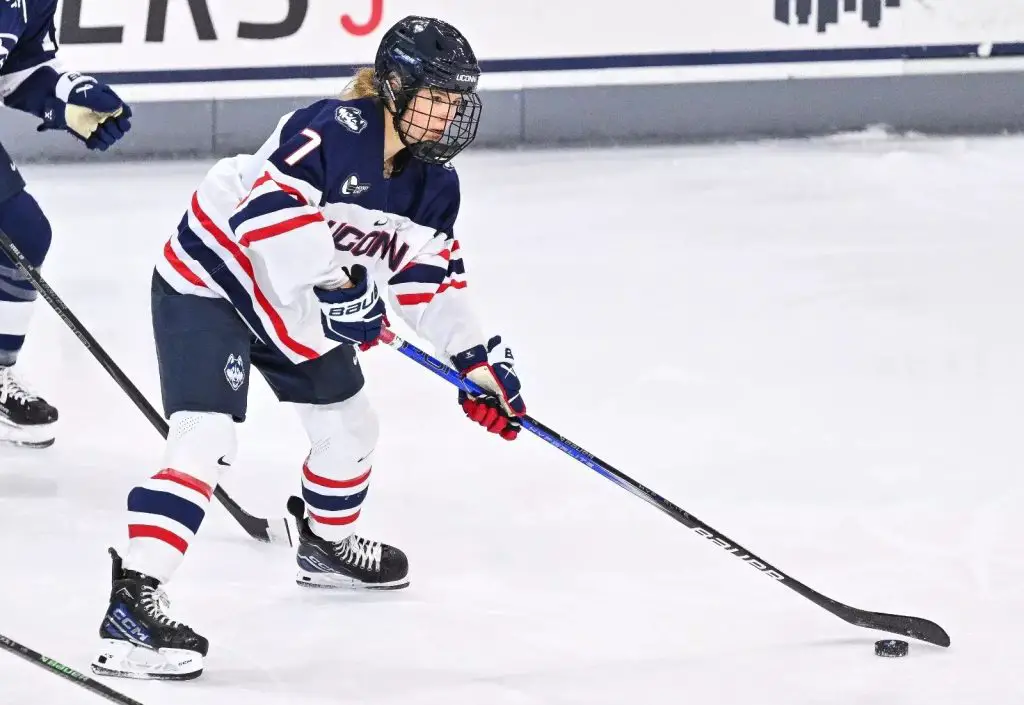
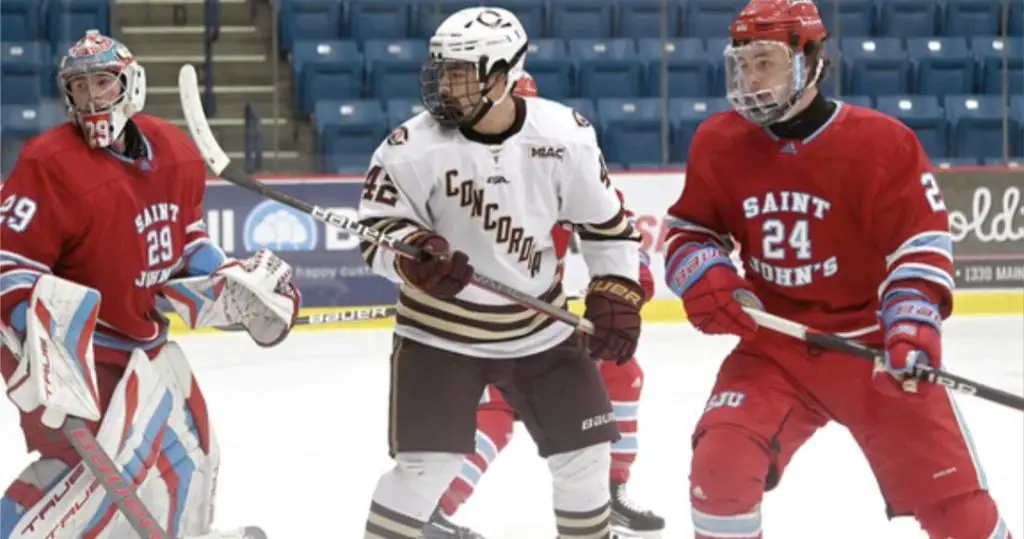
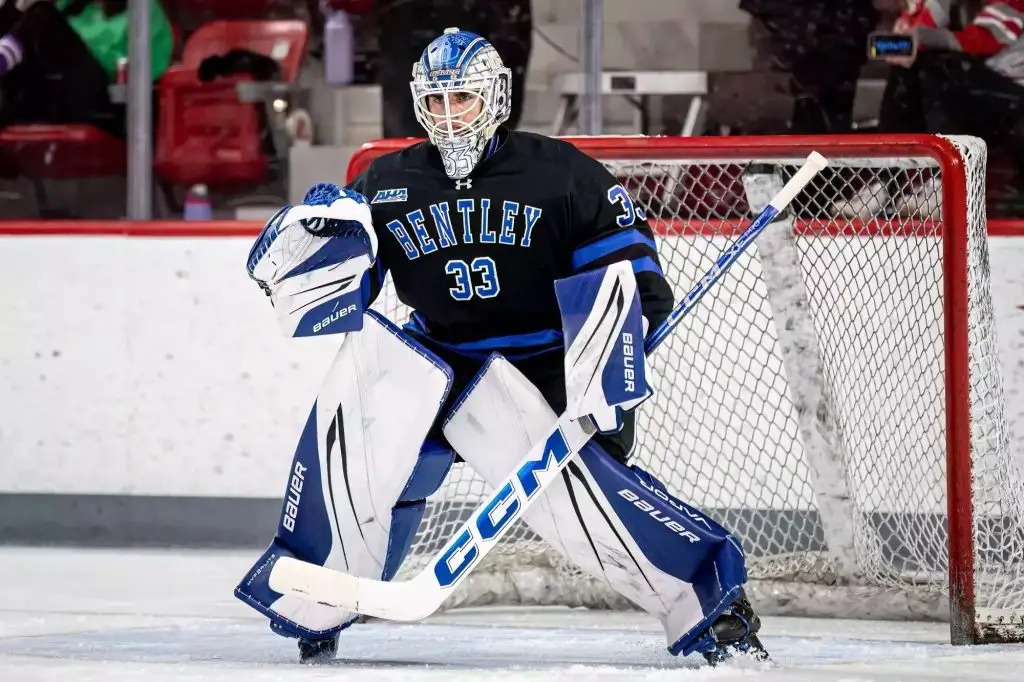
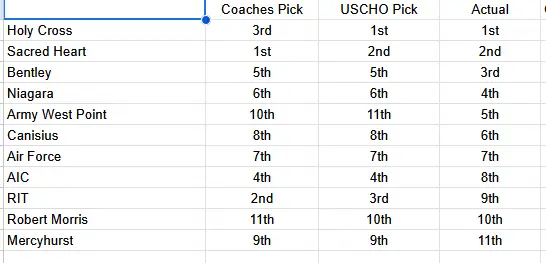
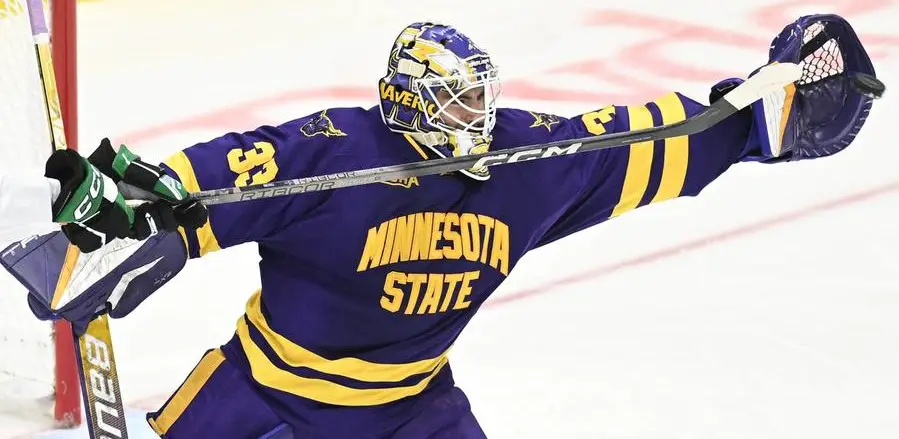
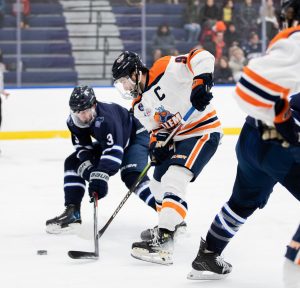
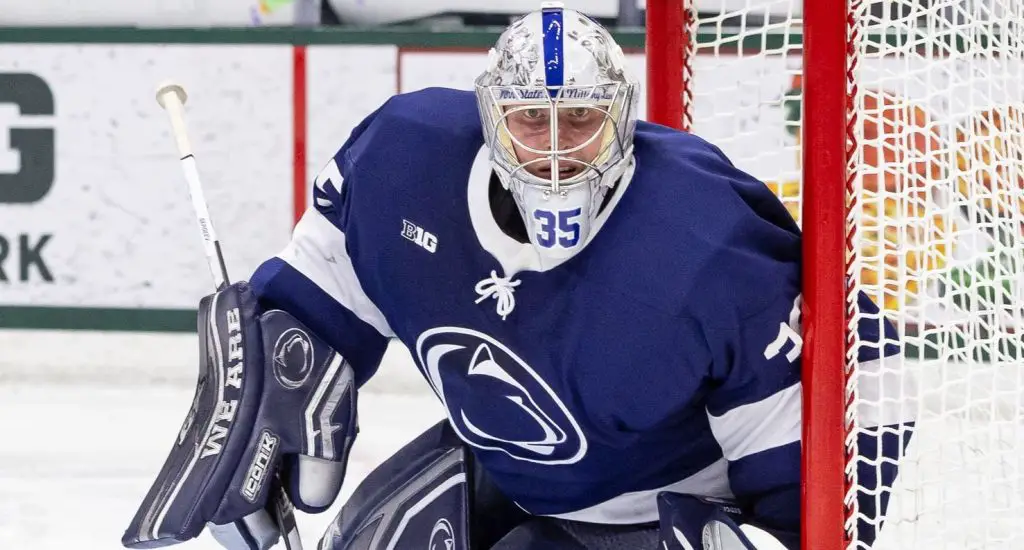
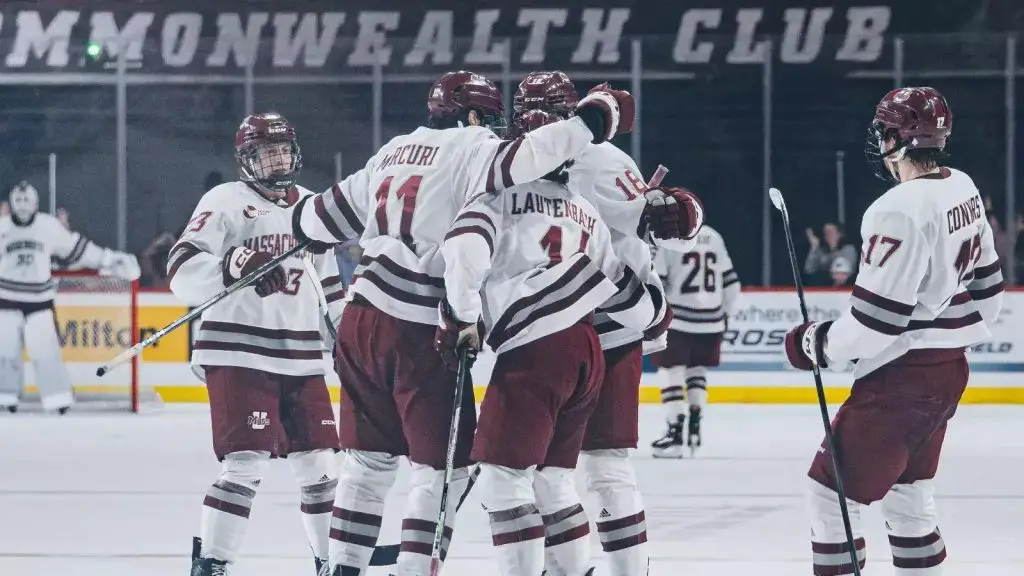
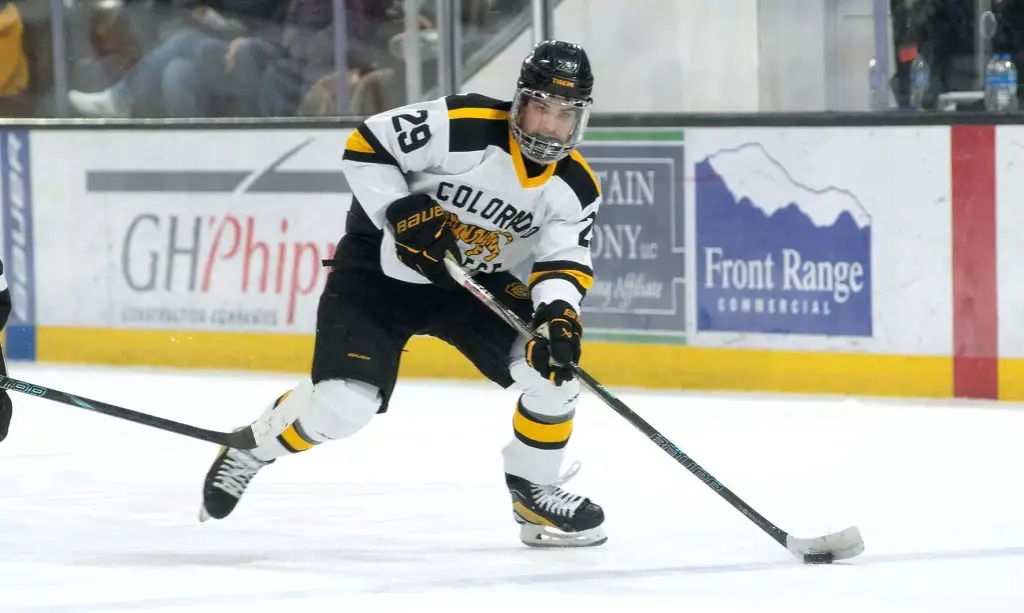

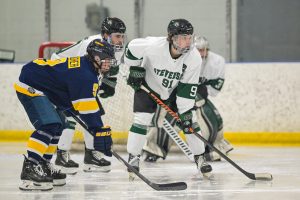
 Nicole Haase and Todd Milewski from USCHO.com take a look at the first weekend of the postseason in ECAC Hockey and Atlantic Hockey but first give a glance at the finish in Hockey East, where UConn swiped the regular-season title away from Boston University on the final day.
Nicole Haase and Todd Milewski from USCHO.com take a look at the first weekend of the postseason in ECAC Hockey and Atlantic Hockey but first give a glance at the finish in Hockey East, where UConn swiped the regular-season title away from Boston University on the final day.